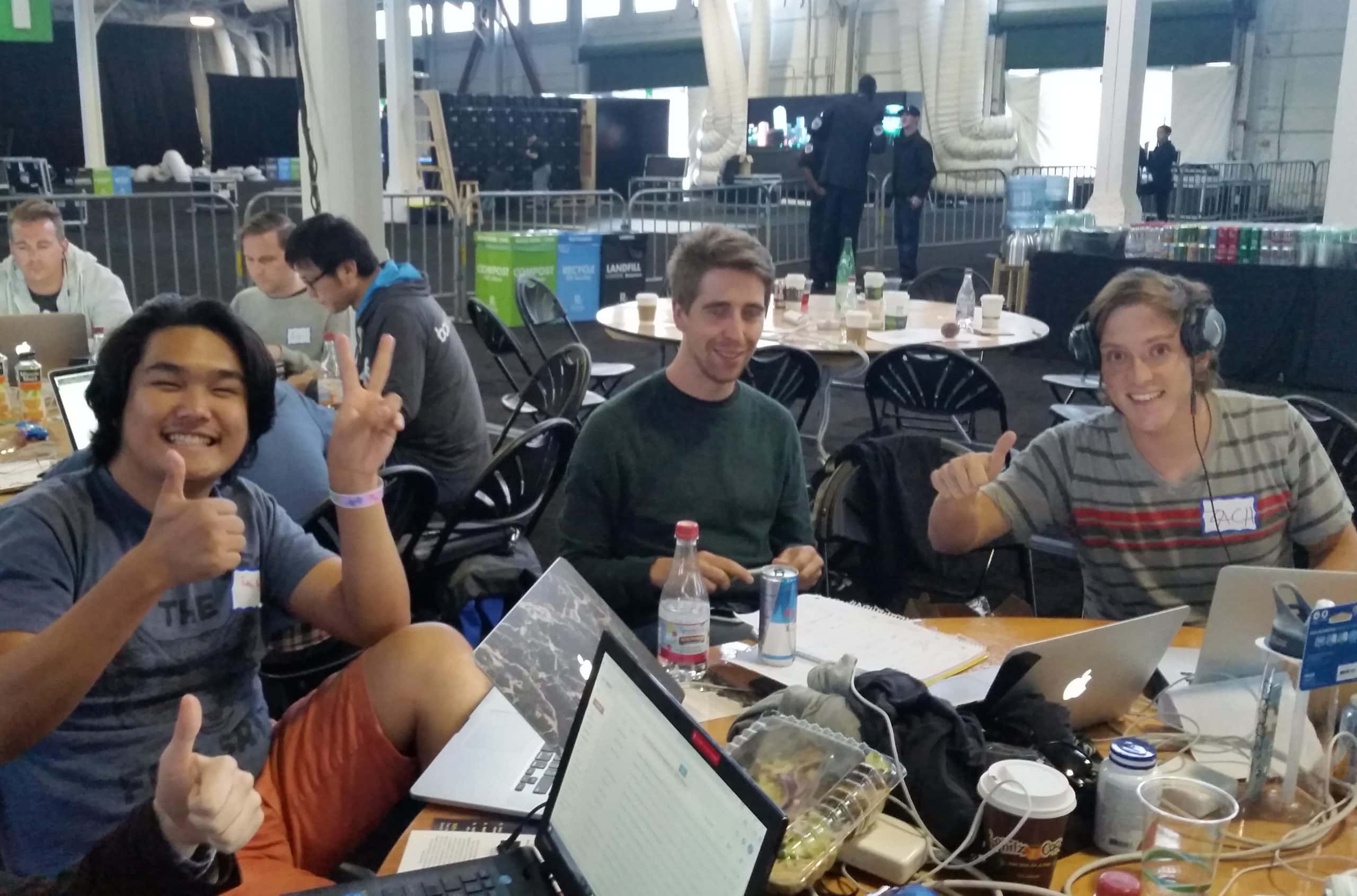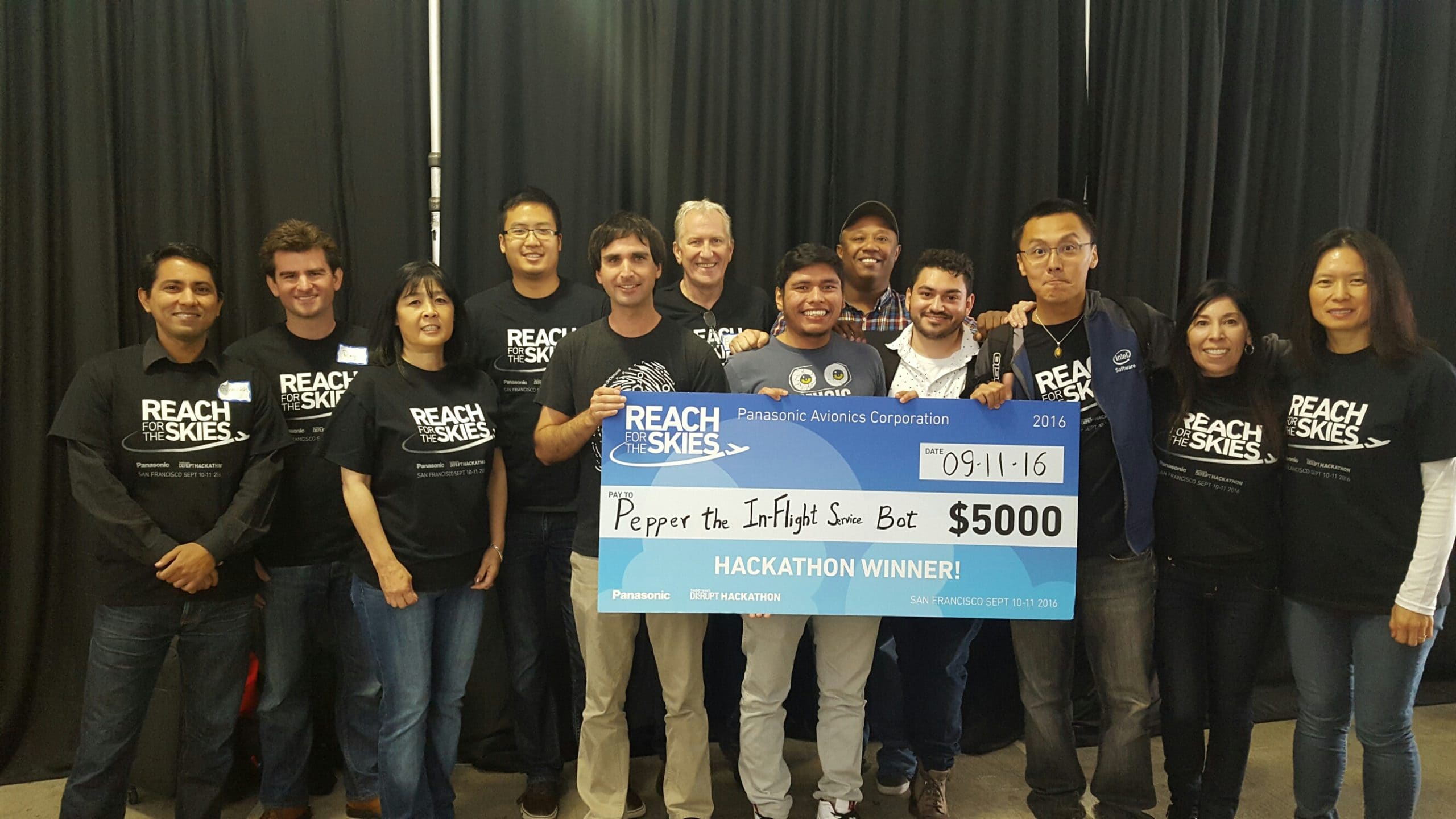Panasonic Avionics Looks to Hackathons to Elevate PaxEx
Share

APEX Insight: Panasonic Avionics sponsored last weekend’s TechCrunch Disrupt SF Hackathon with the goal of discovering creative use cases for its application program interfaces (APIs), which would elevate the airline passenger experience. The in-flight entertainment and communications solutions provider plans to expand upon one of the ideas from the event and showcase it at APEX EXPO in October.
Panasonic Avionics sponsored last weekend’s TechCrunch Disrupt SF Hackathon with the goal of discovering creative use cases for its application program interfaces (APIs), which would elevate the airline passenger experience. Eleven teams of experienced developers had 24 hours to put their heads – and hands – together to come up with an original idea by combining APIs from more than 15 sponsors, including TechCrunch, MapQuest, IBM Watson and, of course, Panasonic.
“It was great to be able to get direct feedback from the developer community so that we can build better APIs for them,” says Gurmukh Khabrani, software engineer at Panasonic Avionics. “The event also was really helpful in spreading awareness of our APIs to developers.” According to Ray Vincent, another Panasonic Avionics software engineer who chaperoned the event, “the developers are using the latest technology tools to build these applications, which gives us insight into what the latest trends are.”
“The developers are using the latest technology tools to build these applications, which gives us insight into what the latest trends are.” €” Ray Vincent, Panasonic Avionics
One of the recurring themes was personalization, and it played an important role in the winning concept. Panasonic Avionics awarded team “Pepper the In-Flight Service Bot” with $5,000 for its integration of APIs from IBM Watson and HERE with passenger data from Panasonic Avionics that would enable Pepper to communicate with passengers in their native language and detect their emotions. The runners-up included inFlightX, a personalized travel assistant that recommends media and ads in flight through an algorithm based on passengers’ preferences, and Seatswap.Club, a program that gives airlines the opportunity to collect ancillary revenue by renting empty aircraft seats to passengers – kind of like an Airbnb in the sky.

While creativity was a major factor in determining the winner, deliverability was also at play. “We asked the participants to create something that they would want to see in flight,” says Isabel Perez, Corporate Development, Panasonic Avionics. “But ultimately, we’re looking for products that we can actually create.” Panasonic Avionics has plans to expand upon one of the ideas from the event and showcase it at APEX EXPO in October.
“Now we’d like to focus more on innovation. The goal for the next challenge is to result in a real in-flight product.” €” Laurie Da Silva, Panasonic Avionics
The in-flight entertainment and communications solutions provider is one of several aviation companies looking toward hackathons as vehicles for change. American Airlines, Air France and Emirates are some of the airlines who have used hackathons to discover new ways to rapidly make meaningful changes to the passenger experience. Qantas recently hosted a hackathon with the theme “seamless travel” and Thales’ xPlor program, which launched in July 2015, aims to develop new, innovative and smart solutions for the aerospace world by partnering with startups that focus on emerging technologies.
Panasonic Avionics’ foray into hackathon heaven doesn’t end here. “We’ve already started speaking to airlines to get their input for general areas that we could target in the next round,” says Laurie Da Silva, SVP, Advanced Systems Engineering. “The first step in this engineering project was about creativity and ease of use of APIs. Now we’d like to focus more on innovation. The goal for the next challenge is for it to result in a real in-flight product.”


